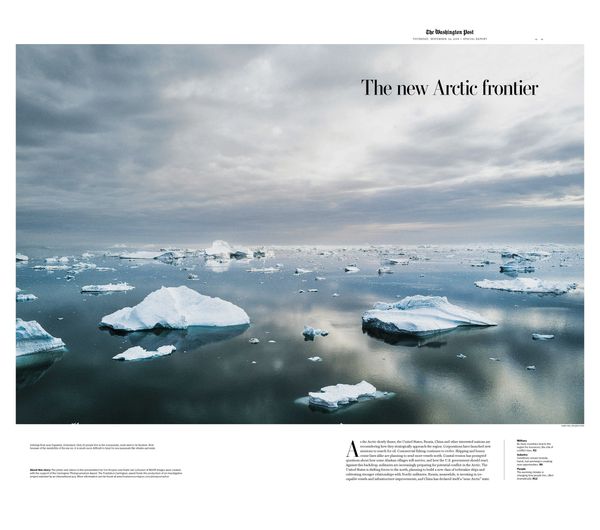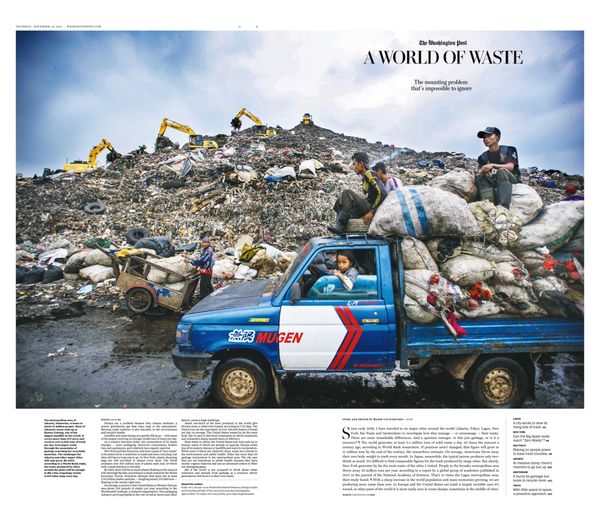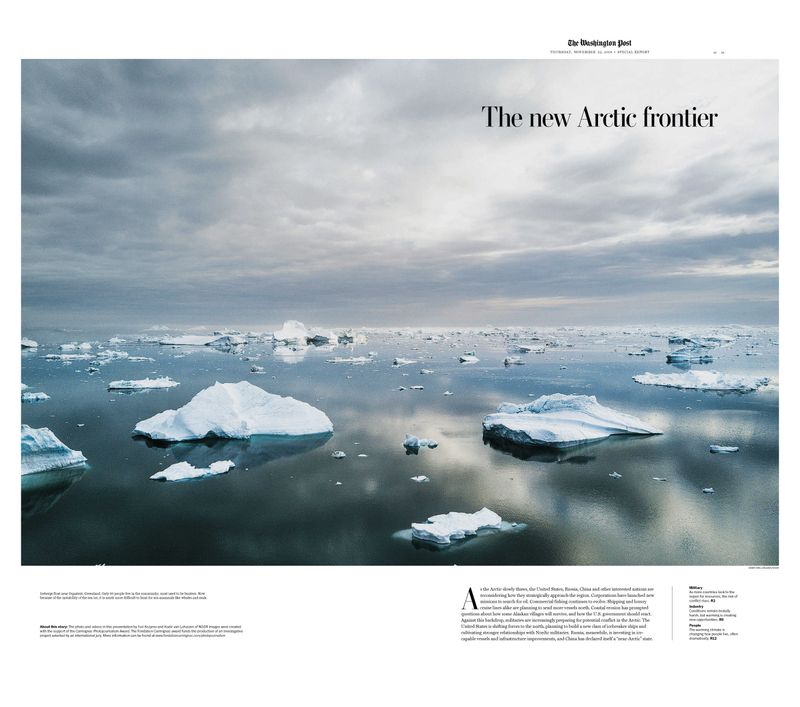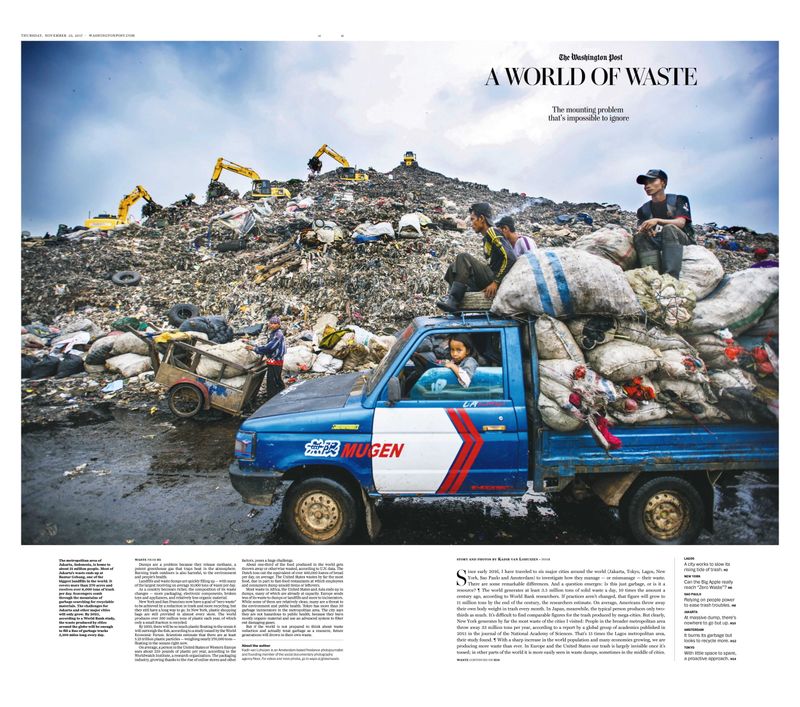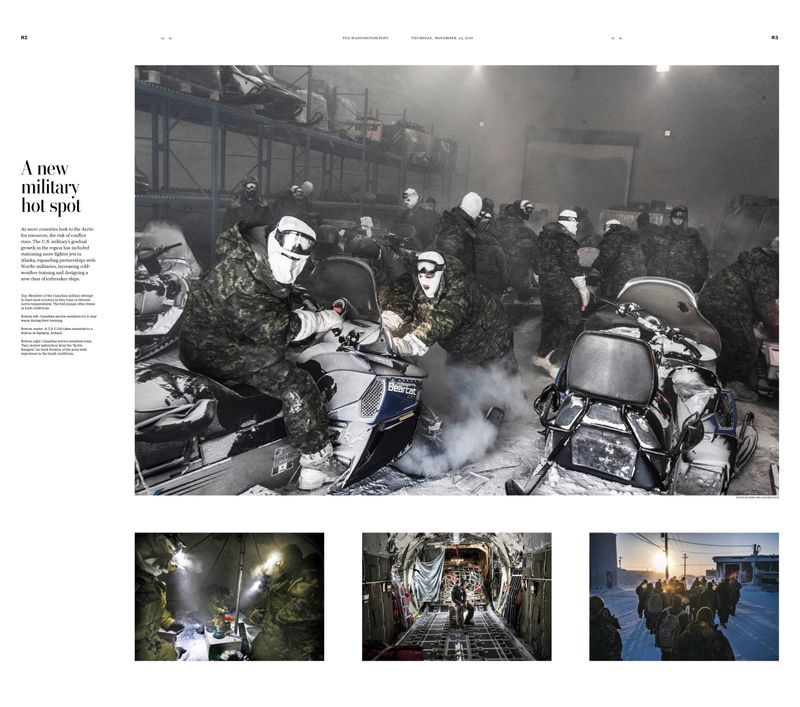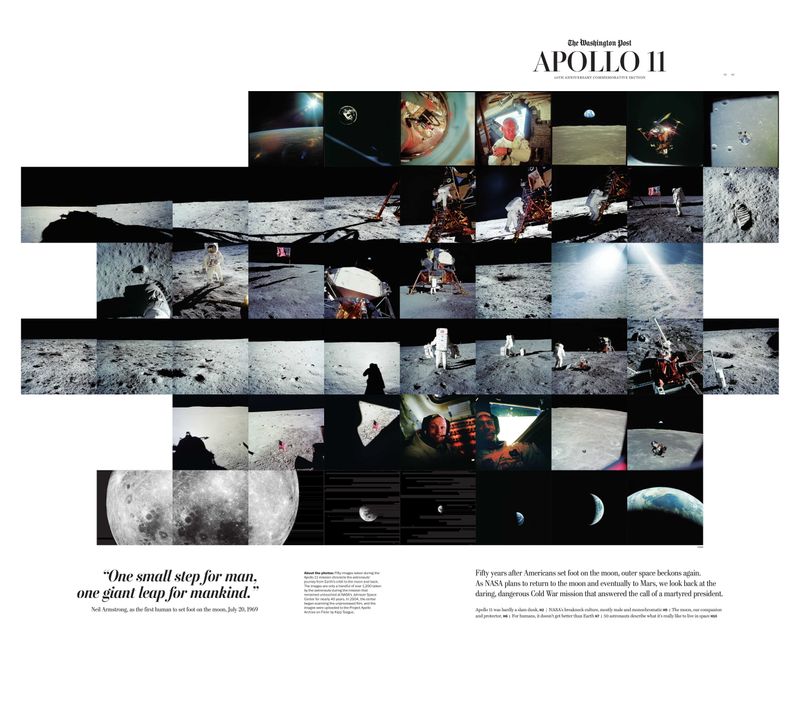The Importance of Collaboration and a Multidimensional Approach
-
Published15 Nov 2019
-
Author
We spoke to Nick Kirkpatrick - one of our Online Education Program mentors - about his career path and how important teamwork can be as well as having a multidimensional approach to producing work and telling stories.
We spoke to Nick Kirkpatrick - one of our Online Education Program mentors - about his career path and how important teamwork can be as well as having a multidimensional approach to producing work and telling stories.
Hi Nick, thanks for joining us on the PHmuseum online mentor team! To start, can you tell us a bit more about how you ended up doing what you are doing at the moment, working as a Photo Editor for Special Projects and Investigations at The Washington Post?
After graduating from art school I spent a few years as a freelancer in Washington, D.C. working as a visual journalist doing photography, videography, and editing for news publications such as The Washington Post and non-profits. I went on to have a short stint as a contractor with The Post and then MaryAnne Golon brought me on as a photo editor for a new and exciting project which became known as Morning Mix. This was one of the first new initiatives after Jeff Bezos bought the news organization and I was to be a part of a small team to deliver fresh news stories to our readers every morning. The catch was the job had a grueling overnight shift from 10 pm-6 am.
Through the process of launching this new project, my job shifted. It was first conceived as providing support for the writers by finding images for their stories but I found that I was able to do that very quickly so I began to contribute my own visually-driven stories - something that I had never done before. With guidance and support from our editor Fred Barbash I truly learned how to be a journalist. How to find and develop stories from the news and write and shape them. I continue to use these storytelling and journalism skills every day.
Two years in, MaryAnne offered me the position of International Photo Editor, responsible for overseeing photographic coverage on our foreign desk. This was the first time I had ever assigned or worked with photographers as an editor and it was sort of “a sink or swim” position but MaryAnne and Robert Miller showed me how to do the job and I’d like to think that I swam. I had the pleasure of working with an amazing group of photographers, journalists, and editors working on stories from around the world - both lengthy enterprise stories and breaking news. I got to work on large projects such as A World of Waste.
A couple of years into the job on the foreign desk, I was asked to be a part of a small interdisciplinary team that was to partner with Google to launch a new visual storytelling product known as Amp stories. It’s a tap-based multimedia storytelling format - similar to Instagram stories. For almost two years I worked with a small team consisting of a reporter, two designers, a video editor, a product manager and an engineer providing feedback to Google on the product, figuring out how and what kind of stories to tell in this new format and how to roll it out to the newsroom. We figured out how to do breaking news stories such as the shooting in Parkland, Florida as well as longer-form pieces from the field such as a story about a North Carolina town is still recovering from back to back hurricanes. It was an invaluable experience.
Most recently, I continue to help with Amp stories but focus my time on special projects, such as a fun piece we did on awesome science travel destinations or the Apollo anniversary and working with our award-winning investigative team on projects and stories such as our Opioid coverage.
At The Washington Post you work on an interdisciplinary team focused on visual storytelling. So, collaboration and teamwork are important elements of your work. Can you share with us what your experience is with this and what the benefit can be of working in a team compared to working alone? Do you feel that this is where the future of the industry is? If so, why?
I am a strong believer in collaboration and I think I am a better visual journalist because if it. As a photo editor, that’s the job. I collaborate with photographers and with designers and editors back in the newsroom. I sort of serve as the go-between. I see work from conception through presentation to publication but there are verifying degrees of this.
As I mentioned earlier, one of the things I came away from working on the Amp stories team was just how beneficial it is to work on a small team with storytellers of different disciplines. We all approached the storytelling process differently and through brainstorming with each other our ideas became that much stronger. We all tried to put our disciplines aside in service of the story asking each other: what is the best way to tell the story? I, of course, always want the answer to be photography but sometimes it’s not. Sometimes photography needs to play a supporting role or when we really think about our approach, we can figure out how we can use photography so that it stands on its own and yet is complementary to all the other pieces of the project.
But aside from the storytelling aspect of the project, collaboration was key because we were not only figuring out how to tell stories in this new format but developing the project itself. We are living in an exciting time for visual journalism - we now have the tools to tell stories and connect to audiences like never before but it’s really hard to be an expert in everything. I am fortunate that at The Post I work with some of the very best photographers, designers, editors, reporters, project managers, audience editors, graphic and data reporters, you name it. While this is not the case for most, if you have a project you believe in - I highly suggest finding someone to collaborate with that can complement what you bring to the table. You can still retain your vision as a photographer or visual thinker, but having another point of view or opinion will only make your work better.
You worked as a freelance visual journalist yourself for many years. What made you move to work as a picture and visual editor and producer? And what were the biggest lessons learned during your years working as a visual journalist that you can apply to the work you currently do?
To my delight, I discovered that many of the parts I loved about being a photographer I get to do as an editor more often and on a larger scale. I love to have my hands in the overall vision of a project and I love collaborating with photographers on how to approach a particular story. I love sequencing visuals to tell a story the most compelling and true way, and I love collaborating with designers and editors to determine how best to present the story.
I think that having been a freelancer I have a better understanding of what I’m asking of photographers, both production-wise in the field and some of the challenges beyond the one assignment. So I definitely think it helps to have a greater level of empathy in that regard.
In your role as a picture editor at The Washington Post, what do you look for in photographic works? When does an image or project resonate with you? And what makes a strong visual story in your opinion?
I’m looking for fresh takes on global or national issues in the news, big and small. It doesn’t have to be a project or story that is a huge undertaking. Sometimes the best stories are small or intimate yet reflect these larger issues. Stories that resonate with me are ones where I can see that the photographer is thoughtful about their approach, that it has breadth and depth.
What makes a strong visual story? At work I have a Teju Cole quote taken from a 2016 article taped on my desk. It’s one that I keep coming back to, not only when thinking about representation in photography but about what makes a good photograph.
Art is always difficult, but it is especially difficult when it comes to telling other people’s stories. And it is ferociously difficult when those others are tangled up in your history and you are tangled up in theirs. What honors those we look at, those whose stories we try to tell, is work that acknowledges their complex sense of their own reality. Good photography, regardless of its style, is always emotionally generous in this way. For this reason, it outlives the moment that occasions it. Weaker photography delivers a quick message - sweetness, pathos, humor - but fails to do more. But more is what we are.
You master editing skills. Although editing might not be a science, in general, what makes a good edit? And what editing advice can you give to photographers?
In addition to a visual continuity, I think that a good edit is like a good body of work, it has breadth and depth. A good edit quickly shows the viewer why they should care but also needs to have room to surprise. One thing I like to remind early-career photographers is that people are multidimensional and so stories should be too. While there is no way to tell the complete story of a person - nor should you, your story needs to have an angle and focus - but you should not put anyone in a box. This applies to both how you approach a story and how you approach selecting the images to tell that story. For example, you have a story about a doctor and if the focus of the story is about the doctor themselves rather than the medicine, I want to get to know them and their motivations - show me, don’t tell me. I don’t want to only see them on the job, I want the photographer to dig deeper and show me more aspects of their life, make me feel, and show me why anyone should care about their story.
What advice can you give a photographer who is interested in getting his or her work published in The Washington Post or any other international media?
My biggest piece of advice here is to know the publication you’re pitching to. Know the kind of work they publish and what they’ve published recently and then write your pitch based on that. That said, very often my colleagues and I will get a pitch on a subject or a story that we had just published. This is not good, we would not publish something we had just published the day before.
Be persistent when you’re pitching but don’t have an annoying attitude or assume that you’re being ignored. Editors are busy and a friendly reminder or follow up email a week later is a good approach. It also helps to know who you’re pitching to - do your research and find the best editor pitch to. Ask other photographers for reference.
Can you tell us more about what kind of photography and visuals The Washington Post publishes and how a collaboration with a photographer comes to fruition? Do you commission freelance photographers or do you have staff photographers?
The Post is a large news organization so we publish a wide variety of photography both commissioned and work already created. We are very fortunate to have a great roster of staff photographers, however, we do not have enough for all of our needs so we commission freelance photography particularly on our international and national desks but also in local, features desks and in our magazine. We also publish work on our photo blog, In Sight. I suggest anyone with a great project to pitch should not only reach out to a corresponding desk but to In Sight as well.
Talking about your experience as a teacher and mentor. You are a faculty member at the Eddie Adams Workshop and a mentor with the Native and The Everyday Projects mentorship program. What do you enjoy about these experiences?
What I love about workshops and mentor programs is getting the opportunity to talk with early-career photographers and to look at their works in progress. I love nothing more than to talk to photographers to help them shape their story or their ideas and how to approach them. The standard documentary approach is not always the best way to tell a story and I think that my varied experience and education help me to think about different ways to approach a project or story.
What advice can you give to photographers out there who are keen to further develop their careers?
Build relationships with editors. If we know who you are and know your work we are much more likely to publish it. Start by meeting them in person - either introducing yourself at an event such as Visa pour l'Image or ask for a meeting. Same with pitching to a publication - you should try to know not only the publication but what the editor does as well. At the Post we have many different photo editors that have different roles so a little bit of research can go a long way. If you can’t find out beforehand, ask. Part of building that relationship is finding an editor that you work well with.
If you can’t meet an editor in person take time to write them a personal email. I can’t tell you the number of emails I get addressed to “dear editor” that go on to tell me about the amazing work that they did. One aspect of an editor’s job is to find the best photographer for the assignment. This takes time and research but if a photographer does not have the time to at least write my name in an email I’m going to question whether they will dedicate enough time to an assignment or thoughtfully answer questions about their body of work.
Yes, while your work may speak for itself a little bit of professionalism and mutual respect can go a long way. It’s a two-way street. As an editor, I feel as though it’s my obligation to be professional, responsive, and thoughtful in my work and in selecting photographers, and I want to work with photographers that feel and demonstrate the same.
--------------
Talking About Education is a monthly feature where we reflect on current opportunities and practices to form and develop yourself as a photographer. To learn more about our live one-to-one educational program, please visit phmuseum.com/education.
